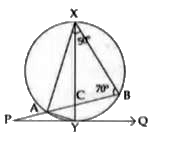ABC is a triangle with vertices A(-8, 3), B(4, 5), C(-6,1). Find the vertices of a parallelogram in this ΔABC sharing vertex B and having half the area of Δ ABC. Find the area ot the paralelogram so formed. Solution in Kannada
The correct Answer is:7 sq. units.
Step by step video, text & image solution for ABC is a triangle with vertices A(-8, 3), B(4, 5), C(-6,1). Find the vertices of a parallelogram in this DeltaABC sharing vertex B and having half the area of Delta ABC. Find the area ot the paralelogram so formed. by Maths experts to help you in doubts & scoring excellent marks in Class 10 exams.
Updated on:21/07/2023Topper's Solved these Questions
- CO-ORDINATE GEOMETRYBOOK - ZEN PUBLICATIONCHAPTER - CO-ORDINATE GEOMETRYEXERCISE - ZEN ADDITIONAL QUESTIONS - LONG ANSWER [LA] TYPE QUESTIONS
6 Videos
- CIRCLESBOOK - ZEN PUBLICATIONCHAPTER - CIRCLESEXERCISE - ZEN ADDITIONAL QUESTIONS ( HOT [HIGHER ORDER THINKING SKILLS] - QUESTIONS) (IIT AND IMO)
9 Videos
- CONSTRUCTIONSBOOK - ZEN PUBLICATIONCHAPTER - CONSTRUCTIONSEXERCISE - ZEN ADDITIONAL QUESTIONS ( HOTS [HIGHER ORDER THINKING SKILLS] - QUESTIONS) IIT /OLYMPIAD/ IMO
5 Videos
Similar Questions
The vertices of AABC are A(4, 6), B(1, 5), and C7, 2). A line is drawn to intersect sides AB and AC at D and E respectively. Show that ADAB=AEAC=14. Find the area of Δ ADE and compare it with Δ ABC.
View SolutionIn the adjoining figure, XY is a diameter of the circle and PQ is a tangent to the circle at Y. Given that ⌊AXB=50∘ and ⌊ABX=70∘, calculate ⌊BAY and ⌊APY.

View SolutionGiven below are the steps of construction of a pair of tangents to a circle of radius 4 cm from a point on the concentric circle of radius 6 cm. Find which of the following steps is wrong.
(P) Step 1: Take a point O on the plane paper and draw a circle of radius OA = 4 cm. Also draw a concentric circle of radius OB = 6 cm.
(Q) Step 2: Find the midpoint C of OB and draw a circle of radius BA= AO. Suppose this circle intersects the circle of radius 4 cm at P and Q.
(R) Step 3: Join BP and BQ to get the desired tangents.
View SolutionTwo of the vertices of a triangle ABC and A (1,1) B-1,3) and the area of ΔABC is 6 sq units. If P is the centroid of the ΔABC, then find the locus of P.
View Solutionयदि किसी त्रिभुज ABC एब्स के शीर्षो A, B, C कि स्थिति क्रमश: →a,→b,→c हो तो त्रिभुज ABC का क्षेत्रफल ज्ञात कीजिए |
View Solutionत्रिभुज ABC के शीर्ष A(0,0), B(3,0), C(-3,0) हों, तो त्रिभुज का क्षेत्रफल होगा:
View SolutionFind the area of triangle ABC with vertices are A(4,2),B(3,9) and C(10,10)
View Solutionत्रिभुज ABC के दो शीर्ष A(6,4) तथा B(−2,2) है तथा इसके केन्द्रक G ( 3 ,4 ) है| ΔABC के तीसरे शीर्ष C के निर्देशांक ज्ञात कीजिये|
View SolutionThe three vertices of the triangle ABC are A(2,3,5) B(3,5,8) and C(2,7,8) : using vector method find the area of the triangle ABC.
View SolutionΔABC के शीर्ष A(3, 0), B(7, 0) और C(8, 4) है । इस त्रिभुज का क्षेत्रफल है :
View SolutionThe vertices of a Δ ABC are A (-5,-1), B (3,-5) , C (5,2). Show that the area of the Δ ABC is four times the area of the triangle formed by joining the mid-points of the sides of the triangle ABC.
View Solutionत्रिभुज ABC का क्षेत्रफल ज्ञात कीजिए यदि शीर्ष निम्नलिखित हों
A(2,7)B(2,2)C(10,8)
View SolutionConsider the triangle ABC with vertices A(1,2,3),B(−1,0,4),C(0,1,2)
Find the area of the triangle ABC.
View Solutionयदि →a,→b,→c एक त्रिभुज ABC के शीर्षों A,B,C के क्रमशः स्थिति है तो त्रिभुज ABC के क्षेत्रफल के लिए व्यंजक ज्ञात कीजिए तथा बिंदुओं A,B,C के संरेखीय होने में प्रतिबंध ज्ञात कीजिए।
View SolutionA(−3,−4),B(−5,0),C(3,0) are the vertices of ΔABC . Find the co-ordinates of the circumcenter of ΔABC.
View Solution
